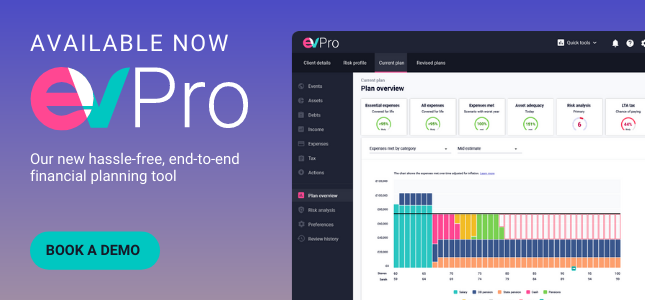Why cashflow modelling remains essential to better client outcomes

In this blog, we address the criticisms of cashflow modelling and outlines why we believe it remains integral to your advice processes and ensures your clients receive the best possible outcomes.
Few things in life are immune to criticism. Even if the overwhelming sentiment is something is great, there will always be someone who disagrees. Cashflow modelling is a case point. Despite becoming one of the most important and popular pieces of technology within the advice process, underscored by recent research, which found that 90% of advisers use them in some shape or form, its merits continue to be placed under the microscope.
Critics’ main argument centres on a lack of accuracy when forecasting future values. And while they indeed may have a valid point here – at least when it comes to some models – the situation is far more nuanced than simply labelling cashflow modelling as either good or bad. This piece addresses these criticisms and outlines why we believe cash flow modelling remains integral to ensuring clients receive the best possible outcomes.
Continuing the trend
The use of cash flow models has accelerated over the past few years, giving a shot in the arm by introducing pension freedoms in 2015. With more people now opting to draw retirement income flexibly rather than the previously preferred solution of guarantees, accurately forecasting clients’ future income, expenditure, assets, and liabilities have become more important.
This trend has coincided with technology playing a more significant role across many aspects of our daily lives; we bank, shop, and even play sport. Take golf, for example. Technology such as augmented reality enables golfers to view the course from multiple vantage points, helping them to navigate the hazards in front of them safely. Likewise, cash flow modelling plays a similar role for financial planners. Still, of instead bunkers, trees and water, the threats take the shape of stock market crashes, sharp currency movements and spiking inflation.
Some hazards expose investors to more potential harm than others; a market crash will damage portfolio values more than a short-term wage increase. But good quality cashflow models allow advisers to stress test such ‘what if’ scenarios. For instance, stress testing the effect of a future market crash on the client’s investment portfolio can identify a client’s capacity to bear losses.
Given that most retirees are working towards a common goal of providing a sustainable income for the duration of their retirement, in the absence of tools that provide accurate forecasts, ensuring income withdrawals are sustainable can be challenging. The same applies to those in the accumulation phase, who wish to determine the point where they will have amassed sufficient wealth to afford to stop working.
Still, even its most prominent advocates must concede that the current cash flow modelling landscape has flaws. None more so than the disparity between different types of tools - there is no universal model, with stark differences between the assumptions forecasted. In addition, some tools lack the required sophistication to produce adequately accurate forecasts.
For additional insights, read our accompanying blog; Do we need a cashflow modelling standard?
Different ways of modelling
Although cashflow models come in various shapes and sizes, they can broadly be divided into two main categories: stochastic and deterministic. With the latter, the assumptions work within set parameters, such as a fixed investment growth rate and inflation. Stochastic models, meanwhile, assume a range of possible outcomes, using historical data to capture events that are likely to occur, such as stock market crashes, throughout a financial plan.
This randomness is, in our view, what sets stochastic models apart from their deterministic counterparts, with the latter lacking the required accuracy. We have been particularly conscious of this while developing our EVPro. This all-encompassing adviser software uses the economic scenario generators model to forecast a more realistic set of outcomes.
Global markets have experienced low volatility during most of the past decade, except this is not the norm. Recent events, such as the coronavirus pandemic, evidence the unforeseen impact events can have on economies and financial markets, highlighting the dangers of using linear assumptions when forecasting.
This is particularly key in a client’s early retirement years when unfavourable market conditions can cause the most damage. Poor market performance can directly impact a sustainable income for those with large equity allocations in the portfolio (which is the majority). Moreover, continuing to draw from equities when stocks are plummeting increases exposure to dangers such as the sequencing of returns and pound cost ravaging. Any cashflow model failing to take this into account risks causing investor harm.
A common mistake is to assume that a single forecast conducted at setting up the financial plan is all that is needed. In contrast, the key to any robust investment strategy is to frequently review, preferably at least annually, whether it is on track its long-term objective. This ensures that the data within the cash flow model remains continues to reflect the broader economic picture.
Find out more about stochastic forecasting and why we believe it’s the most credible model by reading our eBook, Modelling Future Outcomes: Why Stochastic is the Credible Choice?
So what next?
EVPro is an end-to-end financial planning solution that enables you to explain risk to your clients quickly, helps you easily create and communicate cash flow plans and ultimately helps your clients meet their financial life goals.
